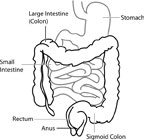I.OBJECTIVES
At the end of the lesson the students will be
able to:
a. Identify the parts
and function of Digestive System
b. Study the
importance of Digestive System
c. Locate the parts
of the Digestive System
II.SUBJECT
MATTER
TOPIC : Digestive System
REFERENCES : Science & Tech.
II e-Biology pp. 159-164
MATERIALS : Cut-pictures, flash
card, picture of Digestive System
VALUES : Cooperation and Sportsmanship
III.PROCEDURE
|
TEACHER’S ACTIVITY
|
STUDENT’S ACTIVITY
|
|
A.
Preparatory Activity
|
|
|
1.Prayer
|
One
student will lead the class
Redly…
“Let
us pray…In the name of the Father, and of the Son and of the Holy Spirit
|
|
2.Greetings
|
Good
Morning Tr. Precious
Good Morning Tr. Baby
Good Morning Sir Louie
Good Morning Sir Sam
Good Morning Madam Cantos
Good Morning Classmates
|
|
3.Warm
Up Song
|
Good morning Classmates
now let us welcome our practice
Teacher, Tr. Precious Tañoan
|
|
4.Drill
(The
teacher will flash pictures of Mitosis)
What phase does the following
event occur?
|
-Anaphase
-Metaphase
|
|
|
|
|
Review
(The
teacher will show some words)
I have here words
…Read it first then find the corresponding meaning on the board.
|
|
|
B.
Lesson Proper
|
|
|
1.Motivation
PUZZLE
OK class proceed to your respective group and area.
DIRECTIONS:
Inside the envelop are cut pictures…
Reform the
pictures
*After solving
the puzzle…
What
is your idea about the picture that you come up with?
|
(the
student will proceed to their group)
(Students will start solving the
puzzle.)
*It’s Digestive System
|
|
2.Presentation
|
|
|
Do you
have any knowledge about the Digestive System?
|
*It
breaks down food
|
|
3.Discussion
|
|
|
*Digestive
system takes food into the body. Who can explain which means…
*It breaks down food into bits,
small enough to pass through the cell membrane
*What do you call the process of
breaking down foods? After that process the food is now put into the blood.
*Do you have any idea on the
different parts of Digestive System?
Can you give one Redly?
|
The
system responsible for food after we eat is Digestive System.
*Digestion
*mouth
*esophagus
*small and large intestine
|
|
*And
now let’s follow the food as it passes the digestive system.
First
food enters the mouth where it is chewed by our teeth, wets by our saliva
a fluid produced by salivary gland that contains PYTALIN an enzyme that
speeds up break down of starch into sugar.
From the mouth food pass through
the ESOPHAGUS which transact food from the mouth to the stomach by a movement
called PERISTALSIS.
|
|
|
*From
the esophagus food enters to the STOMACH through a ring shaped
muscle called CARDIAC sphincter. Peristalsis mixed food with gastric juices
that will result in the churned semi liquid called CHYME. The chime leaves
the stomach through pyloric sphincter and enters SMALL INTESTINE. The small
intestine signal the pancreas to produce pancreatic juices and gall bladder
to release bile.
|
|
|
Pancreatic
juices aids in digestion of protein, carbohydrates and fats. Bile is produced in the
liver and stored in the GALL BLADDER. It break down fats into smaller
droplets.
What organ produces bile?
How about the one that stores
bile?
After digestion absorption will
take place.
What are the substance that was
absorbed by small intestine?
|
*liver
*gall
bladder
*Nutrients
|
|
Small intestines the
remains of the digestion and absorption are now enters the LARGE INTESTINE
where absorption of water occurs. The remains after water has been absorbed
are now called STOOL or FECES then it will be stored in the rectum then
excrete to the anus.
|
|
|
4.Generalization
|
|
|
Form
your group again…
Study
the picture or puzzle that you’ve solve earlier. Trace the flow of food
in the Digestive System and give its importance then discuss it in front.
The leader will be the one to
discuss.
|
Students
will proceed to their group…
Discuss
the process with their group mates
Present the flow of Digestive
System in front
|
|
5.Application
|
|
|
Identify
the organ that is being described then point the specific organ on
the chart.
|
|
|
6.Evaluation
|
|
|
Identification: Identify the
following statement. Write your answer on your paper.
1.It is the enzyme that is present
in our saliva.
2.It produces the bile.
3.It stores the bile.
4.It is the remains of Digestion
after absorption of water.
5.It is the absorption of water
takes place.
|
|
|
IV. Agreement
|
|
Make a
research about the different Digestive disorders.
Write it your assignment
notebook.
|
